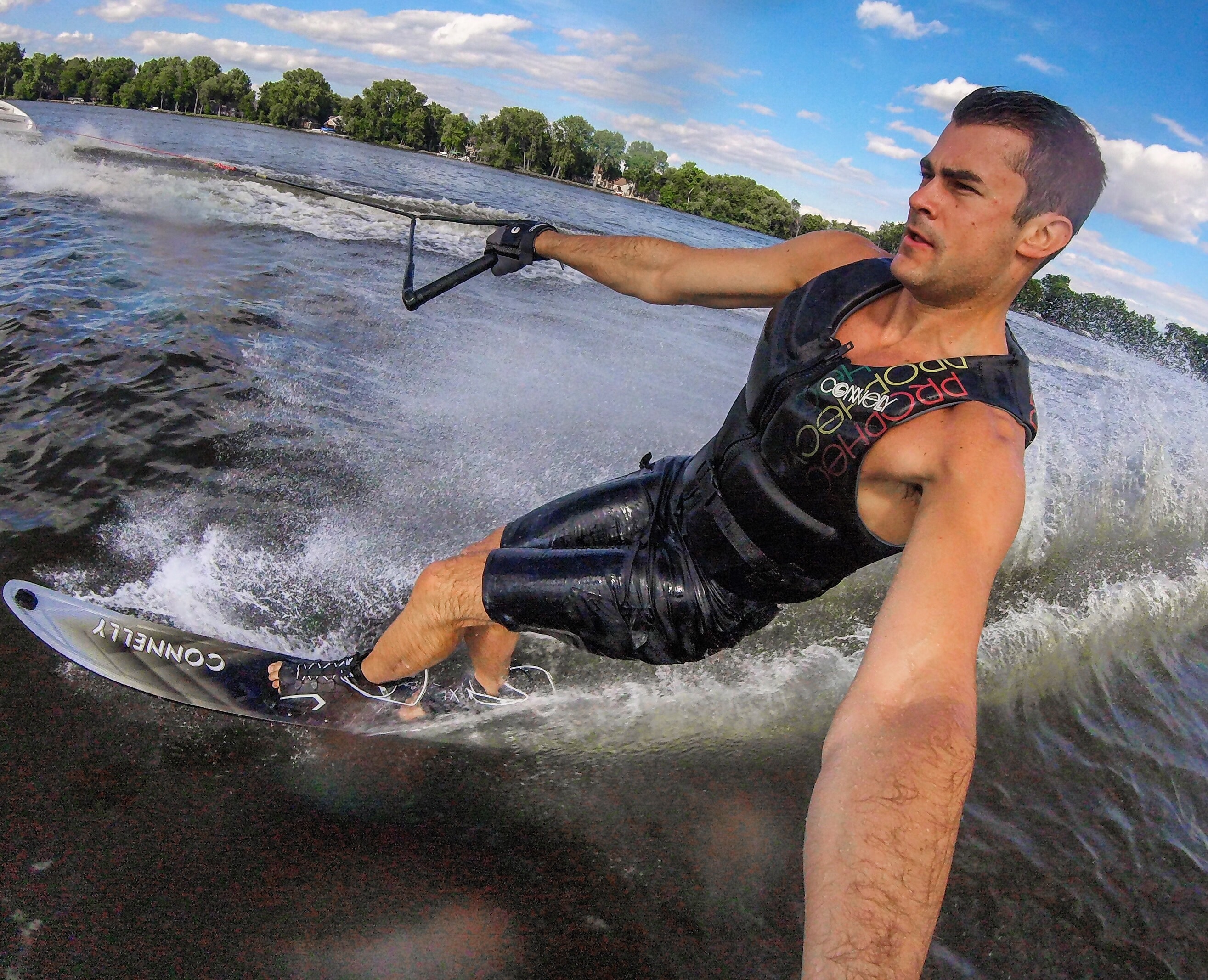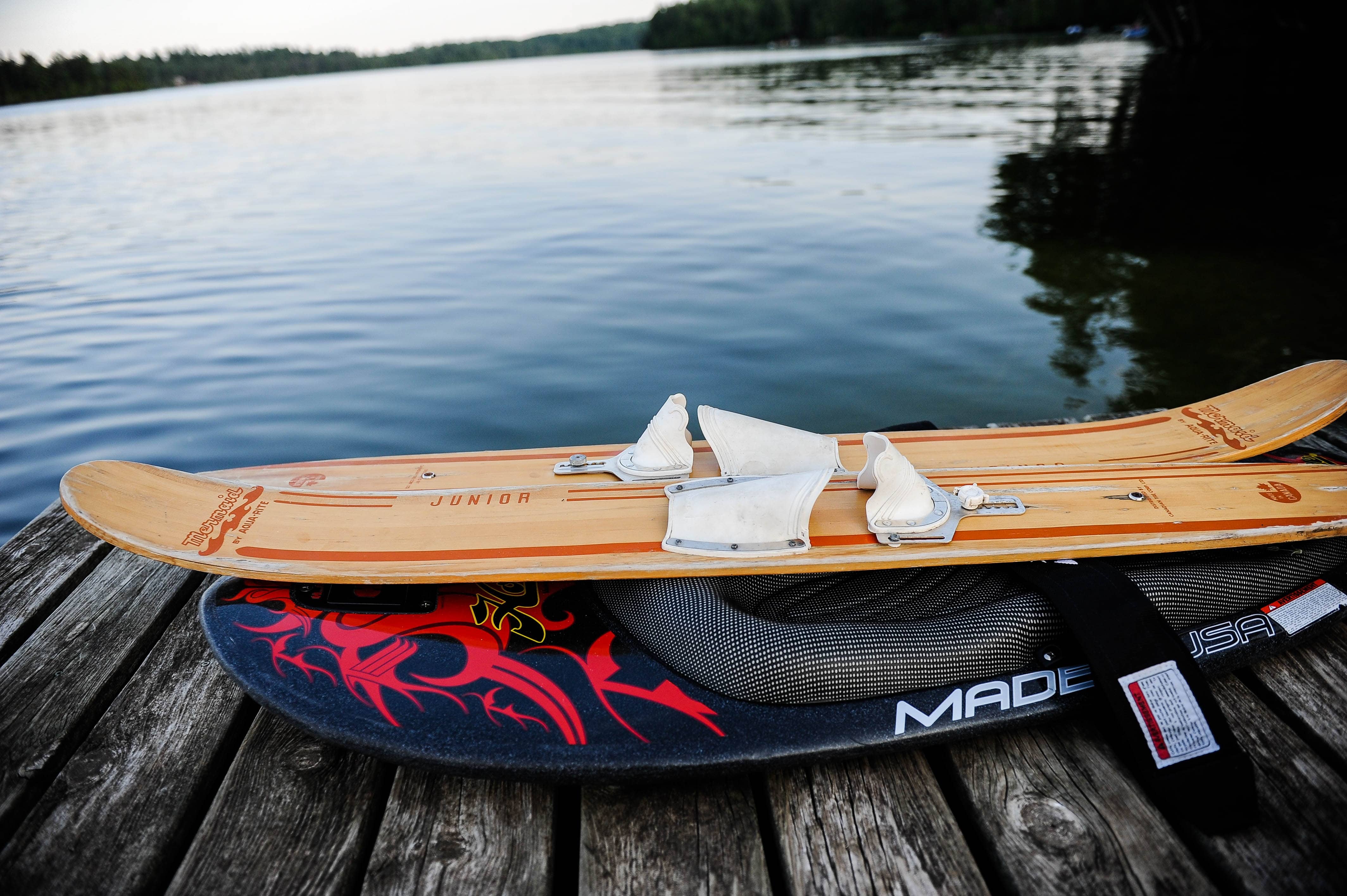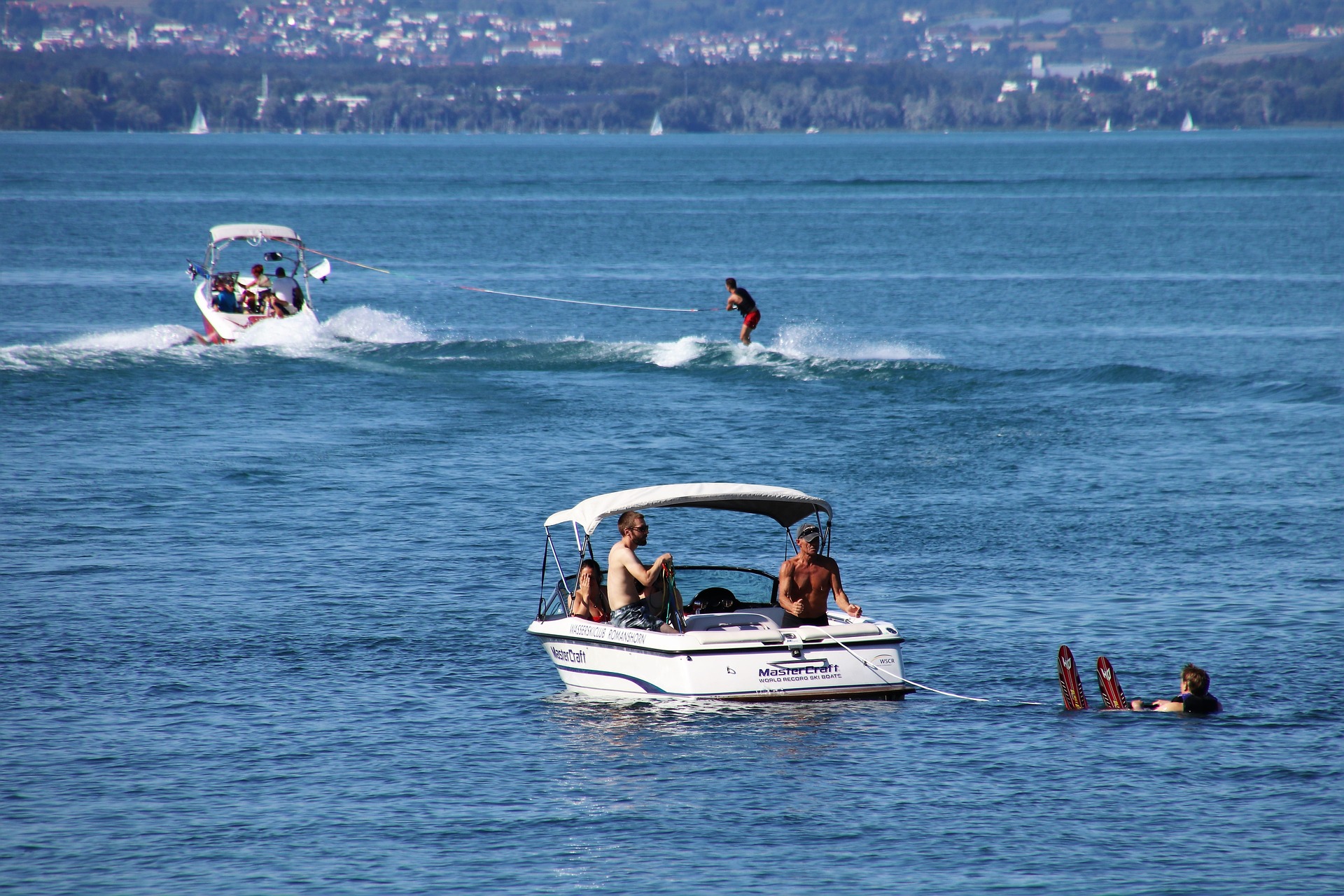Once upon a time, at some point in history, a person was in the mountains. This person watched someone strap two thin sticks to their feet and go sliding down the powdery snow at breakneck speeds. It looked fun and adventurous. That same person (the one watching, presumably) thought to themselves, “You know what? I bet I can do that on water and have just as much fun, maybe more.”
And you know what? That person was right and we all have them to thank for one of the most popular water sports ever. Water skiing is different, but a lot of the mechanics are similar and the adventure is just as thrilling.
Are you new to water skiing? Let’s cover some of the basics.
Water Skiing Gear

Unlike skiing downhill in the mountains, water doesn’t really help you overcome the issues that gravity presents. In fact, you’re actually trying to counter gravity, which makes it all the more challenging — and rewarding. First and foremost, you need a watercraft with a relatively high-powered motor — could be a pontoon boat, could be a jet ski. It just needs to be a watercraft that can accelerate quickly and pull you behind it safely.
Next, you need a personal flotation device (PFD). Never, ever try water skiing without a PFD. Ideally, take the time to learn how to find the right life vest for you. Safety should always come first. Make it a priority to wear your life vest every single time you’re on or in the water, especially when water skiing.

A rope and handle that connects to the boat will pull you along. Water ski handles and ropes are designed to float. In the event you drop the line, it’s easy to locate it again while in the water. Often, water ski handles have an elliptical shape that helps to reduce hand fatigue and a natural rubber grip to provide an improved handhold. The last thing you want, once you’re up on your skis, is to have your hands give out due to an uncomfortable handle.
And, of course, you need water skis. Some skis come with bindings and others don’t, but you’ll need both to water ski safely. As a beginner, it’s best to have a wider set of trainer skis that will help you get up out of the water more easily. As you gain experience, you can graduate to combo skis that are thinner and better for carving (i.e. making sharp turns). Eventually, most water skiers progress to using a single slalom water ski.
Water Skiing Practice

Once you have the right gear, find someone who has some water skiing experience and is willing to take you out on the water. If you pick a good instructor, he or she will start with a few on-land exercises before you hop off the back of a ski boat.
Try these tips before dipping your toes in the water:
-
- Learn how to get your feet in and out of the bindings and how to adjust them for comfort.
- Understand the “cannonball” starting position: tuck your knees up into your chest as you sit on the skis and allow the force of the boat pulling away, with the line taut, to lift you.
- Hold the handle with knuckles facing up for both comfort and efficiency.
- Keep your arms straight (but not locked out) when the boat is pulling you up to reduce arm fatigue.
Once you’re in the water, signal to the driver that you’re ready to go. Keep the rope and handle between the skis, hang on tight, and don’t try to pull yourself up. Instead, let the boat and the momentum pull you from the starting “cannonball” position into a sitting position. Then let your hips come under your shoulders and allow yourself to naturally stand on the skis.
Keep your eyes forward. To turn, or carve, behind the boat, lift the weight off the foot in the direction you want to go and apply more pressure to the opposite leg. Need more of a visual? Picture this: you’re skiing along and want to carve toward the right wake. Release pressure from your right foot and apply more pressure with your left. You’ll head right toward the wake. When you hit the wake, absorb the shock with loose knees.
You’re skiing. That’s all there is to it! Now keep after it and enjoy yourself. Comfort and ease will come with each attempt, so don’t give up if you fall the first few times. It happens to the best of us.
Water Skiing Safety

Skiing is a lot of fun, but any time you’re in the water, it’s important to stay as safe as possible. A few of the ways you can do that are:
-
- Always, always, ALWAYS wear a PFD. No exceptions.
- Don’t ever, ever ski near docks, swimming areas, or other boats.
- Make sure the water you’re in is deep; the minimum depth should be at least 6 feet.
- If you feel like you’re going to fall, try to fall backward or to the side to reduce potential contact with the skis.
- If you fall in an area with other boats around, lift a ski up out of the water to signal to other boats that you’re there. It can be hard to see someone when only their head is above the surface of the water.
- Don’t put any part of your body through the handle, and make sure the rope is clear of your body and other obstructions. Use ropes, handles, and skis only as intended.
- Have an observer in the towboat or jet ski to keep an eye on the skier at all times.
- Make sure your observer has, and knows how to use, a ski safety flag to signal other boaters when you’re in the water.
Water skiing is one of the most popular watersports for a reason. Simply put, it’s a whole lot of fun. Whether you’re just starting out or brushing up on the basics after some time away from the water, water skiing is an activity that will pull you in every time.
What are some of your beginner water skiing tips? Tell us in the comments below!
If you’re new to boating in general, make sure you also check out our checklist for first time boaters!










I tore my bicep first time skiing when I fell 🙁